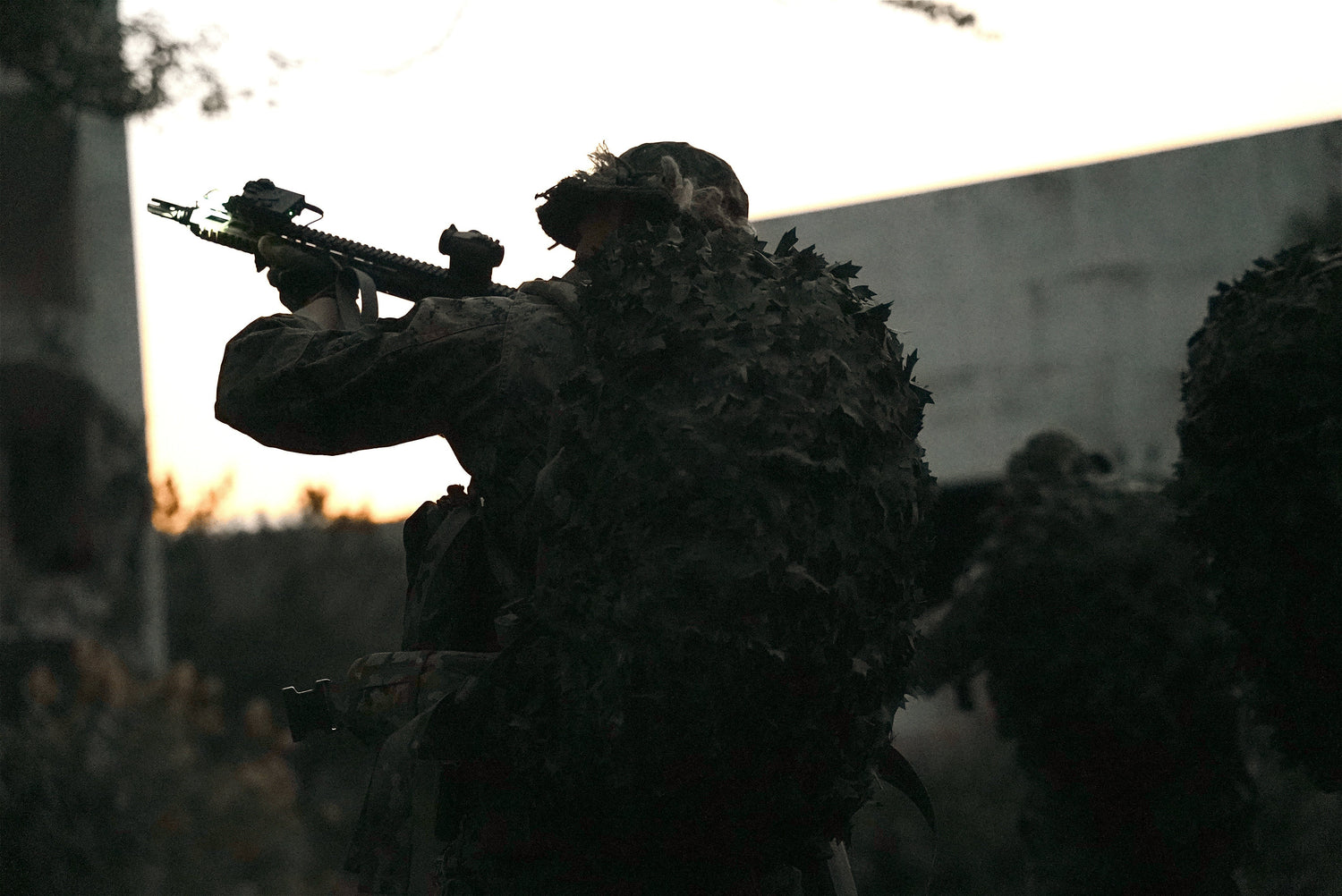Military Camouflage and Deception
Deceiving the enemy matters as much as striking. Deception serves defense. It serves offense. Camouflage and decoys interlock, tightly, at the heart of plans. Technologies evolve—fast. Forces adapt—better. Troops, equipment, sites get hidden. Sensors get confused. Doubt spreads.
Here are today’s techniques, scientific breakthroughs, and the strategic stakes that follow.
1. Adaptive Polymers and Nanotechnology: Toward Dynamic Camouflage
Smart materials: instant adaptation
Polymers react. The terrain shifts; the appearance does too. Soldiers, vehicles, armor—same principle, same aim. Temperature changes, light varies, an electric field arrives: the surface responds.Electrochromics: a key pivot. Color slides. Patterns track the backdrop. Nanocrystals, photosensitive layers, fine structure—the ambient spectrum commands, the surface obeys.
Nanotechnology: coatings that outsmart
-
Self-cleaning coatings: water beads, dust slips, camouflage stays crisp.
-
Stealth paints: embedded nanoparticles lower radar return, damp optical response, soften infrared.
-
Dynamic microstructures: biomimetic patterns, real-time evolution, thwarted identification.
Current limits: hard use, hard constraints
-
Robustness: electrochromic layers remain fragile. They need reinforcement.
-
Power: frequent appearance changes are costly. A frugal, autonomous, reliable source is required.
2. Advanced Optical Camouflage: Manipulate Light, Reduce Visibility
Metamaterials: bend the wave, mask the object
Artificial structures guide light. They bend it around a target. Result: the object recedes visually—sometimes vanishes—depending on angle and band.
Transformation lenses: tuned illusion
Refraction aligns; diffraction is steered. The observer picks up the background. The object, meanwhile, fades. The eye sees the scene, not the mass.
Constraints and avenues
-
Wavelengths: effectiveness limited to specific bands (IR, UV, slices of the visible).
-
Manufacturing: costly processes, fine geometries, tight control.
-
Next steps: miniaturize, integrate. One day, smart fabrics, skins, and canopies could embed these devices.
3. Thermal and Infrared Invisibility: Lower the Signature, Raise Survival
Thermoregulated coatings and decoys
IR sensors hunt heat. We answer with equalization. A coating spreads emission. The signature drops.
Thermal decoys: false trail, real protection. The sensor locks onto a phantom. The missile follows the mistake.
Emission reduction: cool, insulate
-
Active cooling: heat-transfer fluids, microcircuits, local footprint reduction.
-
Multilayer textiles: trap heat, slow exchange—drawn from extreme-environment species. The body warms; the outside sees less.
4. Quantum Camouflage: The Farthest Horizon
Quantum effects and multispectral concealment
Goal: influence photons, tune object–medium interaction, reduce returned information.
Lab-stage avenues
-
Superposition: viewpoint-dependent perception—still theoretical at macroscopic scale.
-
Variable index materials: modulate optical response, aim for erasure effects.
Roadblocks
Stability: real-world conditions are hostile to quantum effects.
Cost: specialized equipment, experimental status. The road is long.
5. Strategic and Ethical Impact: Clear Gains, Heavy Questions
Operational advantages
Increased stealth. Delayed detection. Initiative preserved.
Stronger protection. Lower visual and thermal signatures. Less exposure.
Escalation risks
Power balances shift. Doctrines get shaken.
Clandestine operations become easier. Traceability shrinks. Suspicion grows.
Law and ethics
A framework is needed: clear rules, limited use, multilateral oversight.
Conventions respected. Minimum transparency guaranteed—even in high-tech contexts.
Conclusion
Camouflage no longer stops at nets and matte paint. Reactive polymers, metamaterials, nano-coatings, quantum avenues—the technological arsenal broadens the field of concealment and unsettles modern sensors. The benefits are clear. The stakes, serious. Any integration must weigh tactical superiority against responsibility.
Want to go further or compare high-end options? Visit Nutsof.
FAQ
1) What’s the difference between optical and thermal camouflage?
Optical camouflage misleads the eye and cameras. Thermal camouflage masks heat emissions to foil infrared detection.
2) Can metamaterials make a soldier completely invisible?
Not yet. Their effects are still tied to specific frequency bands and viewing angles.
3) What’s the most advanced application today?
Operational electrochromics and thermoregulated coatings—already fielded with concrete results.
4) Can these camouflage technologies be used in civilian settings?
Yes. Technical fashion, climate-aware architecture, security for sensitive sites—technology transfer is underway.
5) What’s the legal impact of these technologies?
The regulatory framework is still thin. International rules are needed to preserve minimal transparency and uphold conventions.
Best regards,
The Nutsof Team
Advanced Camouflage & Defense Solutions
🌐 www.nutsof.com
Follow us on Facebook and Instagram for the latest in advanced military camouflage technologies.


